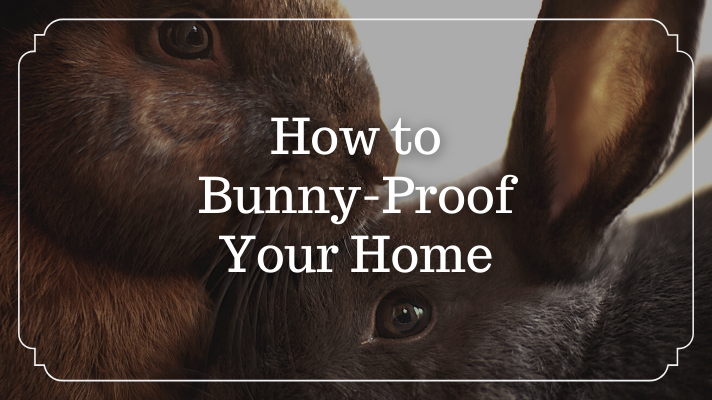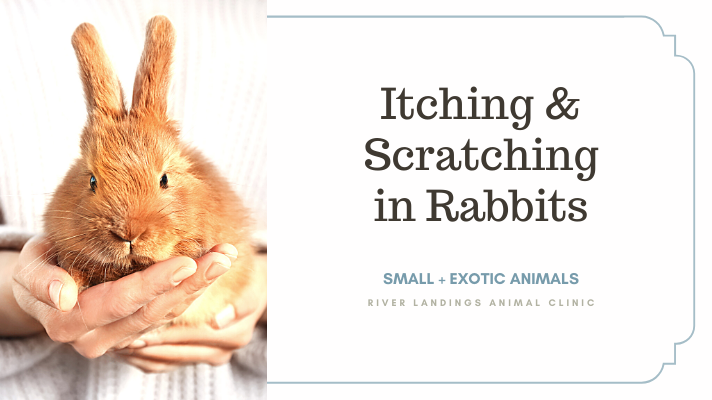Rabbits are curious pets that not only need a lot of space to roam and explore outside of their cage but also tend to get into things they shouldn't. By bunny proofing your home, your rabbit can explore their domain without getting into trouble.
Flooring & Baseboards
Rabbits love to dig so expect that any ground surface that will allow them to do so will be dug. Unfortunately, for many bunny lovers, this means their carpeting is the victim of their bunny's behavior.
Area rugs, carpet, and carpet padding are all attractive digging items for your rabbit so if you have them in the room you designate for your rabbit's playtime or home, it is very likely that they will be ruined. If you are okay with this likely potential, then that's fine (just make sure they aren't actually eating what they dig up).
If you want to avoid the mess and possible fiber ingestion, choose a room for your bunny that has a non-porous, easy-to-clean surface instead. Linoleum, tile, and laminate flooring are popular choices for bunny owners since they can't be dug into, don't absorb urine, and won't stain.
Baseboards are another concern for chewing rabbits, namely all rabbits. Wooden baseboard corners and edges seem to scream to be chewed on by your rabbit. If these can be avoided in the room where your rabbit roams that is ideal, but if not, you should cover or protect the baseboards to avoid them being destroyed.
Some rabbit owners make custom baseboard protectors by using pieces of wood with hinges that stand up to block the boards. You can use wire and plastic storage cube pieces that snap together and lean up against the wall, short pieces of wooden fence pickets individually attached with removable adhesive pieces (i.e. Command™ strips) so they can be replaced as needed, and other creative protective options. Some people simply line the entire room with playpen sections to protect the walls, corners, doors, and baseboards. Plastic corner protectors that attach with adhesive are also useful for baseboard corners.
If you have carpeting that has been chewed or is especially vulnerable to being chewed (corners that lift up) try placing furniture, litter boxes (if your rabbit is litter box trained), area rugs, or mats meant to be chewed by rabbits on those spots. This will not only hide the area but potentially keep them from chewing it.
Doors
If you don't use metal baby gates to keep your rabbit contained, then you probably have wooden doors that do the job instead. Rabbits will chew the bottoms and corners of these doors so in order to protect them you can put a kick plate the very bottom of them. A kick plate can also be helpful in covering up previous rabbit damage on the bottom of a door. Also, be sure to remove the door stop if it is at the bunny's level and instead utilize one at the top of the door or install a door handle wall guard.
Electrical Cords and Outlets
Cords and wires are not only things that are hard to replace on lamps and electronics but they are also extremely dangerous to your bunny if they are chewed.
WARNING
Electrical shocks and burns are seen in rabbits that chew on wires. Death is possible from the initial electrocution or side effects of the damage it does to the mouth.
Make sure all electrical cords and wires are out of reach of your rabbit. Utilize ceiling lights whenever possible or keep lamps on a table. Protect cords with plastic cord protectors, flex tubing (corrugated plastic tubing), or PVC pipe if you absolutely cannot avoid a cord being in the room with your rabbit but you should do everything you can to keep your rabbit from having access to electrical cords. Use a baby electrical outlet plug to make sure your rabbit doesn't try to chew the outlet opening as well.
Furniture
Furniture legs are often the victims of rabbit teeth just like baseboards. They come in so many different shapes and sizes so you may have to get a little creative with coming up with an option to protect them. Flex tubing is a popular choice to slide onto furniture legs since it is flexible and comes in different diameters.
Large PVC piping is another protective option or you can use temporary chewing alternatives like toilet paper and paper towel tubes to slide onto thin table legs and provide your rabbit with something to shred. Other creative options include plastic flower pots, bed leg risers (turned upside down) or protectors (such as Bed Boots™), and plastic furniture corner protectors. You may have to make something to fit the furniture legs in your home if you can't find something to slide over them.
Plants
All plants should be off the ground and out of your rabbit's reach but ideally, the room your bunny frequents shouldn't have any houseplants at all. While there are some safe plants, some plants are toxic to rabbits if they eat them and potted plants will just be dug up and make a mess so there are really no good reasons to keep them where your bunny is.
Provide Chewing Options
The best thing you can really do to bunny proof any room is to make sure a variety of chewing options are available to your rabbit at all times. Of course, they will always chew what you don't want them to chew (unless you train them not to) but if they have things they can chew they will be less likely to chew a baseboard, door, or table leg.
Make Items Taste Bad to Your Bunny
Bitter sprays (such as Grannick's Bitter Apple spray) can also be a useful chewing deterrent for items you can't protect. Spray this regularly on fabric furniture, decor, area rug edges, and other items to help discourage your bunny from chewing them by making these items taste bad. There are also lotion or cream options if you need something other than a spray.
Hear From Us Again
Don't forget to subscribe to our email newsletter for more recipes, articles, and clinic updates delivered straight to your e-mail inbox.
Related Categories:



